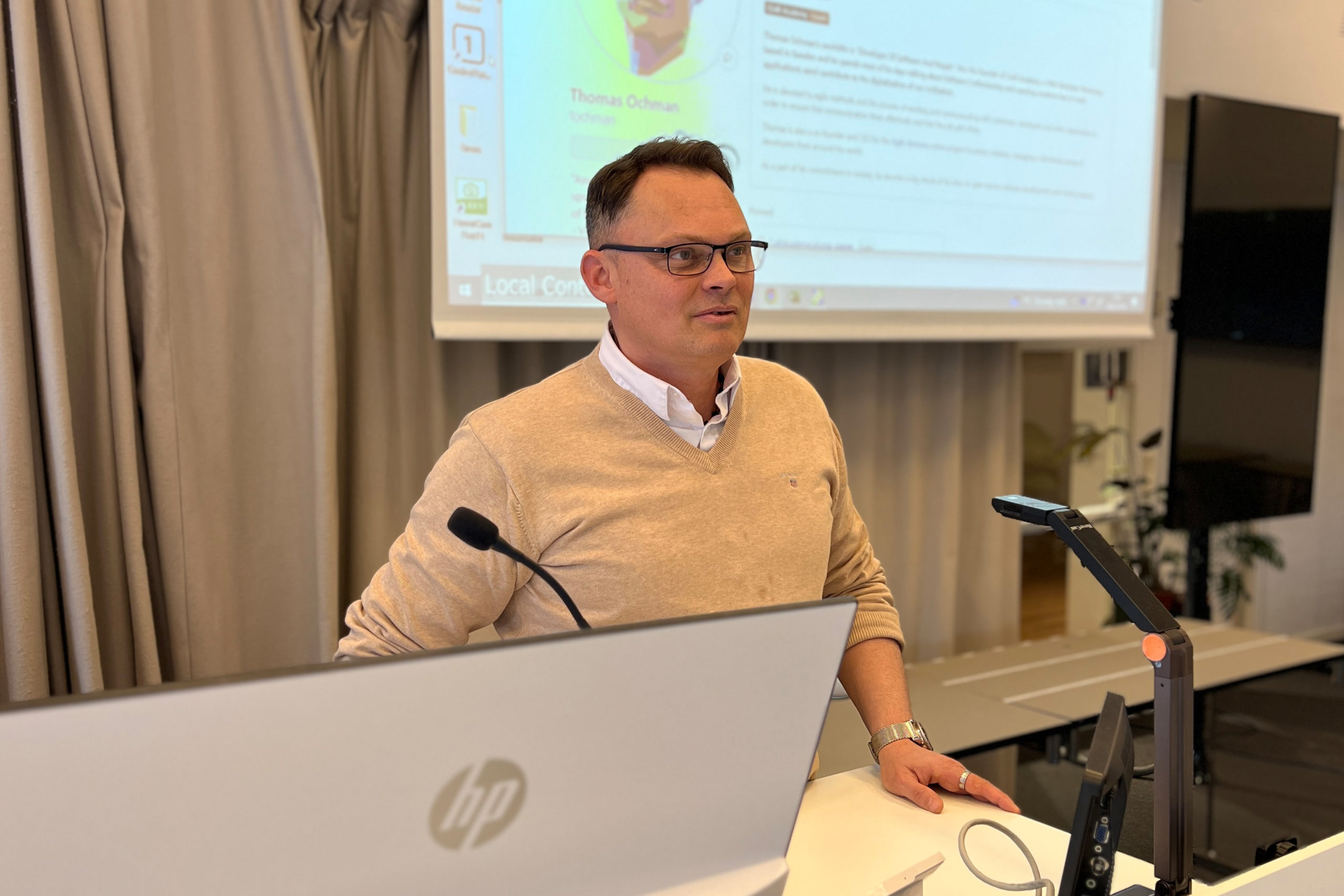Embracing Change through the Iterative Learning Cycle

Thomas Ochman has created the program Web Application Development with React. Below you can read about how his program works and the pedagogique behind it.
A Comprehensive Approach to Modern
Education
”Change is the only constant” is a timeless adage that holds true, especially in today’s rapidly evolving technological landscape. To thrive in this dynamic environment, professionals must continually update their skills and adapt to new developments. One way to achieve this is through accelerated training programs which have emerged as a popular solution for skill acquisition in a short amount of time.
Accelerated Training Programs
Accelerated training programs are intensive, short-term courses designed to teach specific skills at a rapid pace. These programs typically range from a few weeks to a few months in duration, offering immersive and focused learning experiences. Training programs have gained popularity in recent years, particularly for teaching programming, web development, and other tech-related skills. They often provide hands-on training, real-world projects, and mentorship from industry professionals, enabling students to develop practical skills quickly and efficiently.
The Iterative Learning Cycle (ILC)
The ILC is a four-stage instructional model consisting of Listen, See, Practice, and Reflect. By embracing the Iterative Learning Cycle (ILC), students and professionals can foster a lifelong learning mindset, enabling rapid adaptation to ever-changing market needs. Furthermore, by incorporating Agile methodologies into each stage, educators can create a comprehensive and adaptive approach to teaching programming and Agile concepts, especially in accelerated programs:
- Listen: In this stage, students are introduced to new programming and Agile concepts through lectures, discussions, or instructional materials. The instructor can use Agile techniques, such as user stories and iterative planning, to explain complex ideas in a practical and relatable manner. This helps students understand the importance of focusing on user needs and working in incremental steps.
- See: Demonstrations and examples are crucial in this stage. Educators can employ Agile methodologies, such as pair programming or live coding sessions, to show students how to apply the concepts in real-world scenarios. This enhances their understanding of the practical application of programming and Agile principles.
- Practice: Students work on coding exercises, projects, or other hands-on activities in this stage. By implementing Agile frameworks like Scrum, educators can break projects into smaller, manageable tasks, allowing students to work in short iterations (Sprints) and experience the benefits of iterative development first-hand.
- Reflect: Finally, students evaluate their learning experience, identifying successes and areas for improvement. This can be done through Agile retrospectives, where teams discuss their progress and make adjustments for the next iteration. Reflection promotes self-awareness and continuous improvement, helping students develop a growth mindset and adaptability.
Agile Techniques for Learning
Using Agile methodologies to teach programming and Agile methodologies themselves can be an effective approach to learning. Agile is an iterative and incremental project management framework that prioritizes collaboration, adaptability, and customer feedback. It is widely used in software development and can also be applied to education.
Here are some specific ways to incorporate Agile methodologies into teaching programming and Agile concepts in accelerated programs:
- Scrum framework: Organize students into small, self-organizing teams, assign specific programming projects, and use Sprints to complete manageable tasks. Daily stand-up meetings can be held to discuss progress and address any roadblocks.
- User stories and backlog: Teach students to define project requirements using user stories and prioritize them in a product backlog. This helps them focus on user needs and prioritize tasks accordingly.
- Iterative development: Encourage students to work in short iterations, building and refining their projects incrementally. This allows them to receive frequent feedback from peers and instructors and make necessary adjustments.
- Pair programming: Use pair programming techniques to promote collaboration and help students learn from each other’s strengths and weaknesses.
- Reflection and adaptation: Hold retrospective meetings at the end of each iteration to review progress, identify improvements, and apply lessons learned to future iterations.
Benefits of ILC and Agile Methodologies in Accelerated Programs
In accelerated training programs, the ILC and Agile methodologies can be particularly effective in facilitating rapid skill acquisition and adaptability. By focusing on hands-on learning and iterative improvement, students can quickly develop the skills required to succeed in the tech industry. Furthermore, the ILC’s emphasis on reflection fosters a growth mindset, which is essential for reskilling and upskilling throughout one’s career.
Let’s wrap this up
In conclusion, the integration of Agile methodologies into the Iterative Learning Cycle offers a comprehensive approach to modern education, particularly in accelerated programs. By emphasizing iterative learning, practical application, and continuous improvement, the ILC enables students to acquire, refine, and update their skills at a faster pace. As a result, they are better prepared to tackle the challenges of today’s tech industry and contribute meaningfully to the ongoing digital revolution. By embracing the notion that ”change is the only constant,” educators can ensure a workforce that is agile, adaptable, and ready to meet the ever-evolving needs of the modern world.
The combination of accelerated training programs and Agile methodologies in education, and the Iterative Learning Cycle creates a powerful learning environment that caters to the demands of today’s fast-paced industries. With an increasing emphasis on reskilling,
upskilling, and lifelong learning, such approaches become crucial for individuals and organizations to remain competitive in the job market. By fostering a culture that embraces change and prioritizes continuous growth, both students and professionals will be better equipped to navigate the rapidly changing landscape of technology and the modern